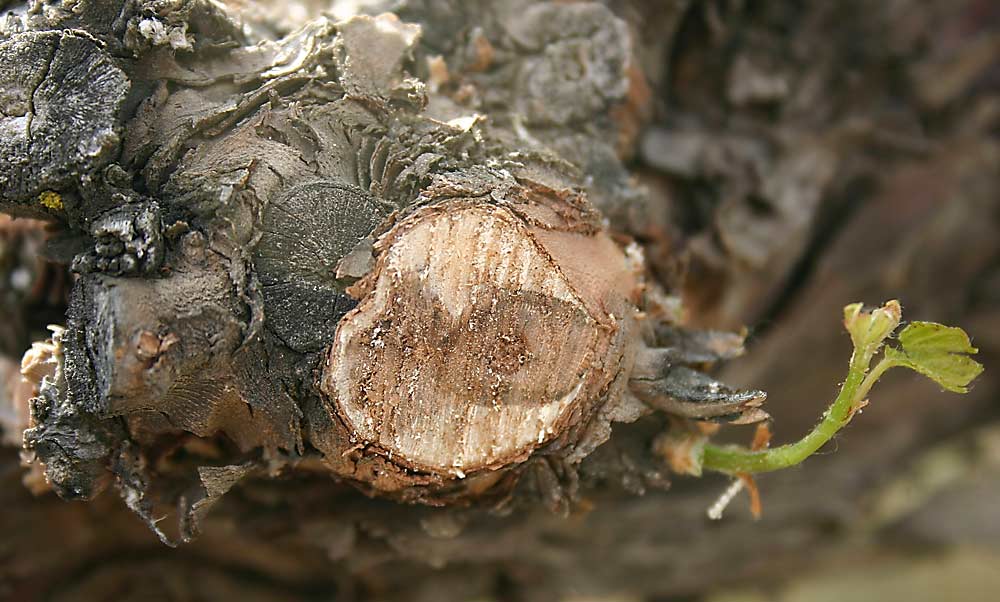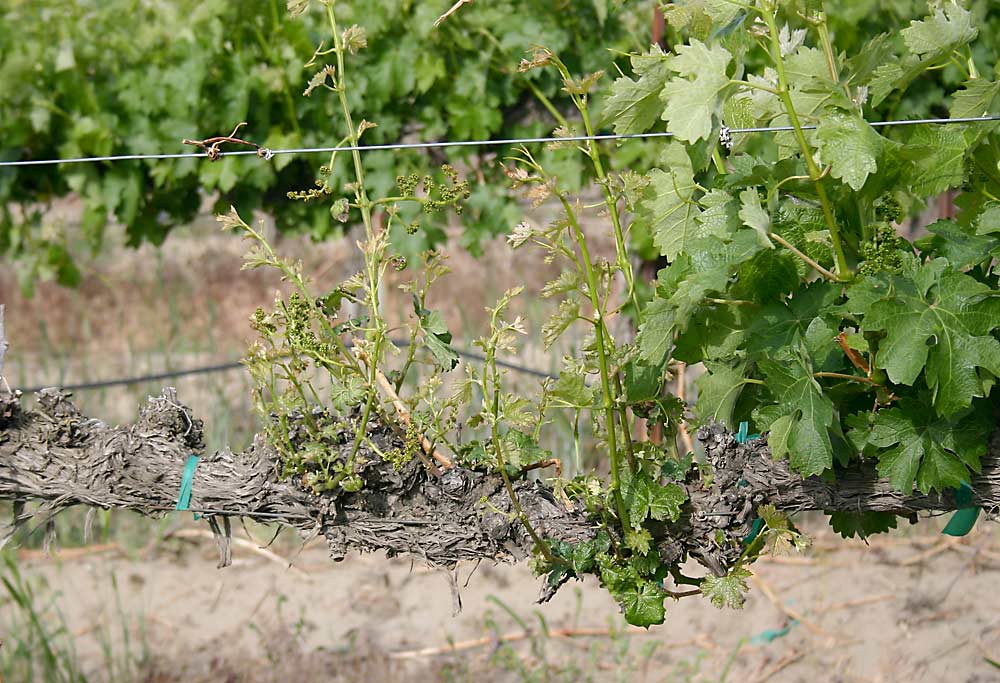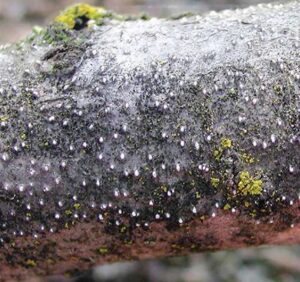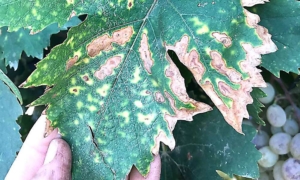
A survey for trunk disease pathogens in Washington vineyards turned up a couple of surprises.
Grapevine trunk disease refers to the wide range of wood-decaying fungal species found in vineyards around the world. But the Washington survey conducted in 2018 uncovered a few new species, slightly different from their cousins causing better-documented disease in California vineyards.
For example, consider the newly discovered Cytospora yakimana. Cytospora canker or dieback refers to a family of wood-rotting pathogens that plague grapevines and stone fruit — and plenty of other woody hosts. But those most commonly found in the vineyard survey are distinct from their cousins in other climes, said Michelle Moyer, Washington State University extension viticulturist and co-leader of the research effort.
“A lot of our Cytospora species are regionally adapted enough that they are different species. They grow better at cooler temperatures,” she said, in comparison to their common California cousins. “That means research coming from California, like on spore-release models, won’t (necessarily) work here.”
She collaborated on the survey with Kendra Baumgartner, a research pathologist with the U.S. Department of Agriculture based in Davis, California.
Baumgartner’s lab specializes in these fungi, and she took the Washington samples into cultures to watch them grow and to characterize them, work that took several years. She also ran greenhouse tests to confirm that the fungi collected could cause wood discoloration symptoms like those seen on the vines where the samples were collected — proof they had a pathogenic effect.

The most common pathogens found in Washington vineyards were species in the genera Botryosphaeria, Cytospora and Eutypa, Baumgartner said in a recent workshop with Washington cherry growers, who are noticing similar symptoms. (See “Documenting dieback.” )
“All these dieback types kill fruiting positions,” decreasing yield and vigor, she said. But the symptoms happen slowly, showing up years after infection. Infection occurs through wounds, such as from pruning or winter injury.
The visual symptoms of the fungi can look similar: stunted shoots, dying spurs. Cut into the cordon or trunk and you’ll see a wedge of dark, decaying wood.
The diagnostic detective work to determine the responsible pathogen takes a lot of effort, Moyer said, referring to the taxonomic work Baumgartner’s lab did for the project. But identifying the correct species is the first step to understanding the pathogen’s life cycle and recommending the vineyard management practices to interrupt it.
For example, in California, growers can reduce disease pressure by pruning toward the end of the dormant season, when the wounds heal faster as vines wake up, Baumgartner said.
“That’s what we recommend, although we realize it is not always practical,” she said.
In California, she also recommends “double pruning” or mechanically prepruning, since any wounds that are infected would be removed on the subsequent detail pruning pass. That’s a fairly typical practice in Washington vineyards.
But Washington’s climate conditions are very different, which makes it difficult to translate management recommendations.
She and Moyer did another trial in Prosser to see if applying fungicides could reliably prevent infection of pruning wounds, as California growers — with labor constraints limiting their ability to finish all of the pruning in the optimum timing window — now routinely do, Baumgartner said.
They pruned in March, applied the products and then inoculated the wounds. After bud break, in May, Moyer cut into the wood and sent samples to Baumgartner’s lab for detection.
They found that Topsin M (thiophanate-methyl), which was recently registered for dormant grapevine pruning protection in Washington, worked well against the common Cystospora and Eutypa species they tested.
But that’s not to say it is cost-effective on a vineyard scale.
Mattawa-area grape and cherry grower Charlie Lyall said he’s been losing vines to eutypa dieback in older vineyards for years, but that without a model to know when the risk of infection is high, it would be impractical to spray protectants.
“We prune all winter long. You’d be spraying constantly, which is not very easy to do,” he said. “If there was a model, like for fire blight, that would show you when to spray … we could really use that kind of research.”
Moyer and Baumgartner agree.
“We still need to find out when these fungi are making spores. We don’t want to recommend that growers apply fungicides if spores are not present,” Baumgartner said.
Such research is technical and time-consuming, and Moyer said she doesn’t currently have funding to work on it. But if the same pathogens are pressuring the tree fruit industry, such research could have wider impacts, she said.
Meanwhile, the best practice for managing trunk diseases remains to do cordon and trunk renewal periodically, Moyer said. Cold damage occasionally forces Washington growers to do this anyway, but with better site selection over the years, it’s become less common.
“Some of our improvements in vineyard management have eliminated other activities that indirectly helped with trunk disease management,” she said. As vineyard management changes, it can create new opportunities for old pathogens — and require new solutions.
—by Kate Prengaman








Leave A Comment